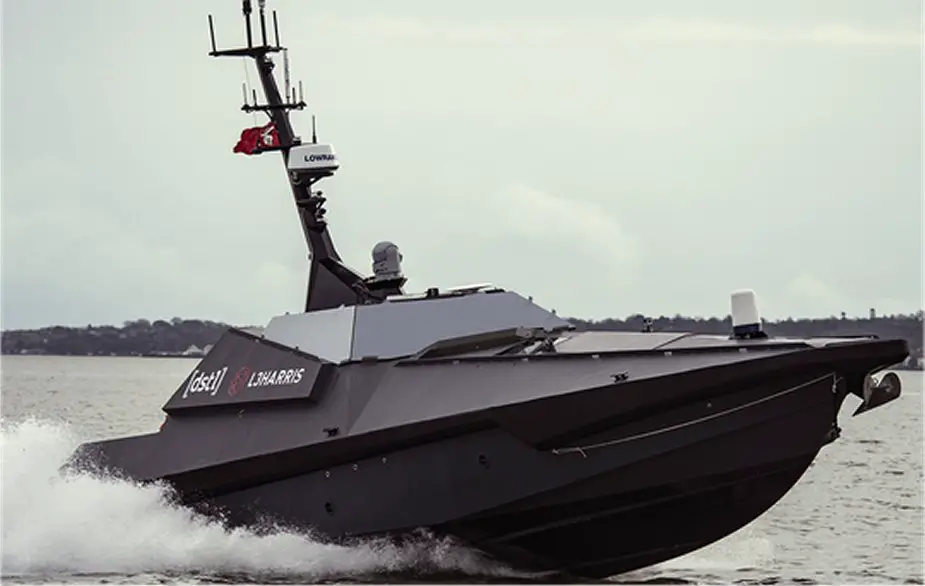According to information published by the UK MoD on January 24, 2022, the Defence Science and Technology Laboratory (Dstl) trials autonomous maritime asset protection system (AMAPS).
Follow Navy Recognition on Google News at this link
 MAST-13 Autonomous Surface Vehicle (Picture source: L3Harris)
MAST-13 Autonomous Surface Vehicle (Picture source: L3Harris)
Working with the Royal Navy, industry partners and the US Naval Undersea Warfare Centre, the Defence Science and Technology Laboratory (Dstl) conducted research to improve detection, tracking, classification and defeat capabilities against surface and subsurface threats to high-value assets and critical infrastructure, using autonomous systems alongside traditional systems.
Dstl worked collaboratively with an industry consortium comprising QinetiQ, SeeByte, L3 Harris ASV and Thales, to develop a concept demonstrator based on open architectures and autonomous systems.
This demonstrator was tested in a synthetic environment to ensure the viability of the concept before experimentation during a 2 week trial in Portland Harbour in October 2021 using Dstl’s containerised system and the Maritime Autonomy Surface Testbed vessel MAST-13.
Different levels of autonomy were evaluated, enabling a better assessment of the role that maritime autonomous systems can play in protecting vulnerable assets while also furthering understanding of the current maturity of the technology.
The trial successfully demonstrated end-to-end autonomy with the remote operation of a long-range acoustic device and firing of a vessel arrestor system with the aim to stop a suspect craft.
MAST-13 is similar to a water-borne drone. At 13 metres long, the boat manoeuvre around a naval task force, either autonomously or remotely controlled from a rig. It could be used to identify threats such as mines or collect intelligence on enemy ships, and then feed this information back to Navy ships.



